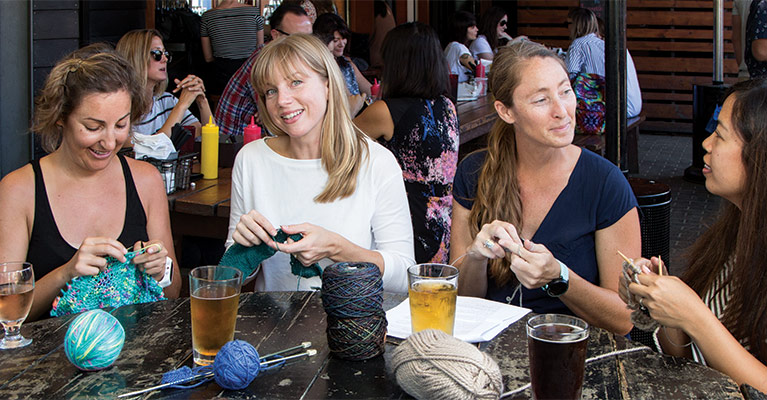On a rainy summer afternoon in suburban New York, a bored 12-year-old Abby Buchwalter found her calling for biology through, of all things, a telephone. Taking apart an old rotary dial phone unearthed in a friend’s basement, she analyzed its “tiny bits and bobs” to determine how it came together to make a machine. She remembers it as a defining experience that made her want to figure out how things work.
As a staff scientist in Martin Hetzer‘s Molecular and Cell Biology Laboratory, Buchwalter now figures out how things work on a cellular level. She focuses on the nucleus, the command center of cells. She first studied the nuclear pore complex, an assembly of proteins that act as gatekeepers on the outside of the nucleus, granting only some molecules access to the DNA housed inside. Halfway through her postdoctoral fellowship, she wanted to shift directions, and with Hetzer’s support, did a reboot.
For the past two years, Buchwalter has been working on another part of the nucleus called the nuclear lamina. Akin to a skeleton, the nuclear lamina provides structural support and helps organize the nucleus. Buchwalter initially was interested in the lamina’s function, stability and lifespan. When she found it constantly reassembles and remodels while the nucleus remains intact, she then wondered how it might change in disease. That led her to Hutchinson-Gilford progeria syndrome, a rare genetic disorder characterized by premature aging and death.
The lamina is mutated in the disease, and Buchwalter found that this mutation alters some regulatory processes in the nucleus, particularly the production of proteins. The prematurely aged cells make too many ribosomes, the cellular machines that build proteins. As a result, the cells produced too much protein, resulting in their using up their energy stores too fast. At the cellular level, patients with progeria are, simply put, living fast and dying young. The disease has proven to be a research model for normal aging processes.
Away from the bench, Buchwalter is active in Salk’s Education Outreach program and helped develop SciChats, video interactions between Salk scientists and local students interested in research. She also participates in Reuben H. Fleet Science Center‘s “Two Scientists Walk Into a Bar,” a community outreach that places scientists in a local bar and invites the public to ask them anything.
For total relaxation, Buchwalter likes to knit, a craft she learned from her mother. On Saturday afternoons she can be found knitting with friends at Station Tavern in South Park, keeping her hands busy and her mind free to unravel the mysteries of life.
























































